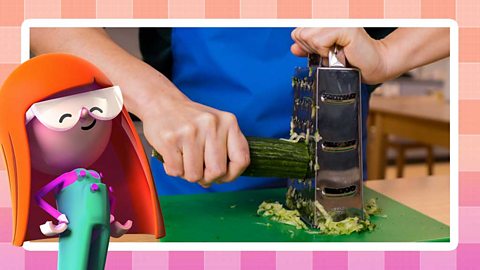Storing food safely
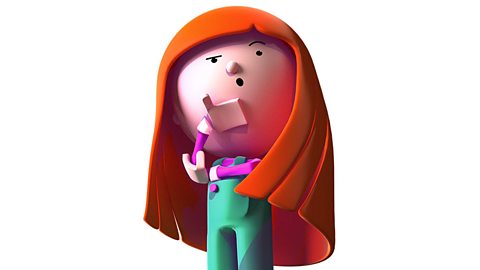
Food needs to be stored in certain ways to make sure that it is safe to eat and that it tastes at its best.
Different foods need to be stored in different places, such as the fridge, freezer or cupboard.
Storing food safely helps to prevent GermsGerms are living things that are too small to be seen with your eyes and that can make us ill. from entering our food and to protect it from:
- ContaminationContamination is when something comes into contact with something dirty, dangerous or poisonous.
- SpoilageSpoilage means when food becomes unfit to eat.
- DecayDecay is when food goes mouldy.

Food and germs
Most germs need certain conditions in which to multiply, such as:
- food
- moisture
- warmth
If harmful germs are in our food and they multiply, they can make us ill.
Therefore, it is important to store foods safely, following the instructions on the packaging, in order to reduce the risk of germs growing.
For example, if you left some milk on a warm windowsill, what do you think would happen? It would soon get mouldy and would be unsafe to drink.
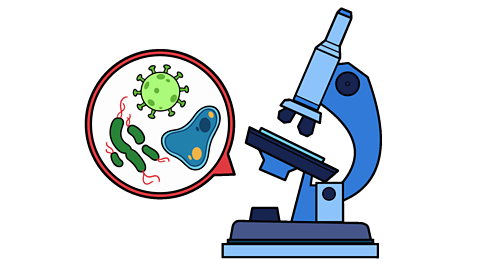
Storing food at different temperatures
Fridges and freezers keep food at much colder temperatures than cupboards do.
This helps to slow down or prevent the growth of germs.
You can find out more about where certain foods should be stored by looking at this slideshow.
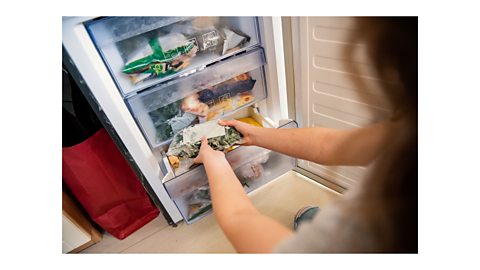
Image caption, Freezer
A freezer keeps food below -18°C. This stops germs from multiplying, so frozen food can be safe to eat for longer. Always follow the storage instructions to determine how long the food can be frozen for and how to defrost it before eating. Foods like ice cream, frozen peas and fish fingers can be bought frozen and kept in a freezer.
Image caption, Fridge
A fridge will normally keep food between 3°C and 5°C. The food is not frozen, but it’s cold enough to slow down the growth of the germs.
Image caption, Bottom shelf of fridge
Raw meat and fish contain germs that can make us ill, unless we cook them. These foods need to be carefully stored in a sealed container and put on the bottom shelf of the fridge above the salad drawer. This means that the raw products can’t contaminate any foods beneath them as the fruit and vegetables are protected by the salad drawers. If meat or fish juices dripped onto some raw food and then you ate it, it could make you ill.
Image caption, Middle and top parts of fridge
Fresh or ready-to-eat products, such as milk, cheese or cooked meats, need to be kept in the fridge above raw meat and fish. Foods kept in the fridge will still go mouldy much quicker than if they are frozen.
Image caption, Cupboard
Dried foods, like pasta and rice, don’t need to be chilled and they can be kept in the cupboard. This is because they don’t have enough moisture for the germs to grow. Tinned foods, like soup and baked beans, have been sealed and cooked in the tins to a temperature that kills any germs. Once you open a tin, it’s like a fresh food, so it needs to be kept in the fridge in a sealed container and can go off in a few days.
1 of 5
Activity: Where should the food be stored?
Can you remember where different foods should be stored? Try this quiz to find out.
Storage instructions
Most food packaging will have instructions on how to store food correctly to make sure that it is safe to eat.
The instructions should include dates that show how long to keep the food for.
There are two different dates that you might find. They are called the use-by date and the best-before date.
Find out what each date means in the slideshow below.
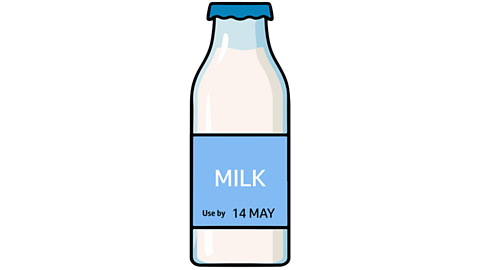
Image caption, Use-by dates
A use-by date relates to the safety of the food. It means that you must store the food correctly and only use it up until that date. Never eat foods after the use-by date, as it can be very dangerous. You will see use-by dates on fresh foods like milk, meat and fish.
Image caption, Best-before dates
A best-before date relates to the quality of the food. It means that after that date, the food won’t taste as good. It will have lost some of its flavour or nutrients. If you have stored the food correctly, it will normally still be safe to eat. You will see this on foods like dried pasta and tinned tomatoes.
1 of 2
Key words
| Fridge | An electric machine that normally keeps food between 3°C and 5°C. |
| Freezer | An electric machine that keeps food below -18°C. |
| Germs | Germs are living things that are too small to be seen with your eyes and that can make us ill. |
| Contamination | Contamination is when something comes into contact with something dirty, dangerous or poisonous. |
| Spoilage | Spoilage means when food becomes unfit to eat. |
| Decay | Decay is when food goes mouldy. |
Quiz: Storing food safely
It's time to test your knowledge with this quiz.
More on Cooking and nutrition
Find out more by working through a topic
- count8 of 13
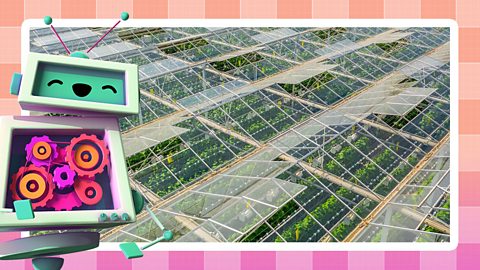
- count9 of 13

- count10 of 13
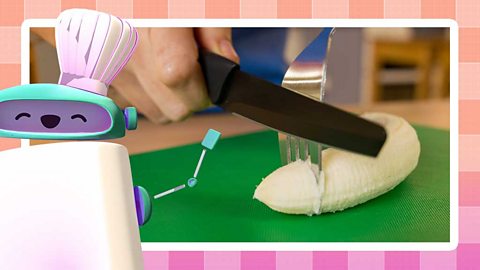
- count11 of 13
